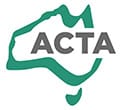The 5 most common
English proficiency tests
© Language Training Institute
Last updated: 24th June 2021
Last updated: 24th June 2021
|
English proficiency tests - these three words can be enough to get any ESL students pulse racing.
With the right preparation English proficiency tests don’t have to be daunting. ⭐️ Golden rule: know thy enemy Ok, we got a little dramatic there, but getting to know everything you can about the test you (or your students) will be undertaking is a sure-fire way to make sure that you can perform at your best. Knowing what to expect during the test can make you feel at ease and will mean that you’re better prepared for the questions coming your way.
English proficiency tests are English language assessment that occurs outside of ESL teaching programs, often for the purpose of determining a candidate’s suitability for entry to an academic or training program, or for employment. Students may come to your class in preparation for taking one of the following exams. Some institutes offer courses specifically for preparing to take the IELTS, TOEFL or TOEIC exams. ESL books designed for preparing for these exams also exist in proliferation. Five of the most common English language proficiency tests are:
Please note that the following information is correct at the time of publication; however, these language proficiency assessments are continually being improved and changes may occur between editions of this text. 1. IELTS The IELTS exam has two modules: Academic, to determine a candidate’s suitability for undergraduate or graduate study, and General, for work, training, community participation and study at lower levels (e.g. diploma, high school). The exam has 4 sub-tests: listening, speaking, reading and writing. The candidates are given a rating on each of 4 scales (S/L/R/W) and a composite rating, which is the average of the four ratings on the macro-skills. Because all test scores can be rated on the scale there is no pass or fail. Each subtest begins with easy questions and gets progressively more difficult. The tests follow a standard format, but the questions are varied every time the test is administered. The listening test (30 minutes) has 40 questions based on 4 texts on social or life situations (one conversation and one broadcast), education and training (one conversation and one broadcast). The reading test (60 minutes) has 40 questions based on 3 authentic texts. Texts are all taken from journals, magazines, books and newspapers. Question types include multiple choice, gap-fill, matching and answers of up to three words. The writing test (60 minutes) includes 2 tasks. The first task asks you to describe information presented graphically with a minimum of 150 words. The second task is a formal essay of a minimum of 250 words. Both tasks must be attempted. The speaking test (11-14 minutes) has 3 sections. Candidates talk about their interests, family, life and topics of a general nature. In the second section they have one minute to prepare to talk for 1-2 minutes on a specific topic. The examiner then asks one or two questions about the topic at the end. Finally you discuss more abstract ideas connected with the theme of the prepared talk. 2. TOEFL TOEFL is accepted in over 130 countries. It is administered in two modes: paper-based in authorised test centres where internet access is not available, and internet –based which is now the main mode of delivery. The test has four sections (speaking, listening, reading and writing) which take about four and a half hours to complete.
3. TOEIC The TOEIC® Listening and Reading test is a valid assessment of English-language reading and listening skills for the workplace. It is used worldwide by employers. Its focus is effective communication in English with coworkers and clients across borders and cultures. It is a paper and pencil administered test. The listening test (45 minutes) consists of 100 multiple-choice questions relating to photographs, questions and responses, conversations and talks. The reading section (75 minutes) consists of 100 multiple-choice questions based on incomplete sentences, text completion, short passages and double passages (pairs of reading texts with 5 questions per pair. 4. ISLPRâ “The ISLPRâ is a scale that describes the development of second or foreign language proficiency in adolescent and adult learners. More precisely, it is a set of four subscales for the macro-skills of speaking, listening, reading and writing. These subscales trace the development of the target language from 0 (no ability to communicate in the target language) to 5 (indistinguishable from a native speaker of the same socio-cultural background). There are intermediate ‘plus’ or ‘minus’ levels, giving a total of 12 levels in each subscale. Eight of these levels are described in detail (i.e. a page of rich description for each level in each macro-skill). The description includes a statement of the kinds of tasks that people at that level can perform (with the contexts they can perform them in) and the kinds of language forms they use when performing those tasks (with detail about accuracy, fluency, appropriateness, etc.). The descriptions assume real-life, communicative language use.” (Elaine Wylie Centre for Applied Linguistics and Languages (CALL) Griffith University, http://www.gu.edu.au/centre/call/frameset4.html, 18 July, 2005). ISLPRâ is not an exam with a centralised or standardised bank of questions or tasks. ISLPRâ is a scale, not a test. The scale is designed to be used by assessors to describe the proficiency level of the candidate. In relation to each macro-skill the assessor assigns tasks, using authentic texts, which will push the candidate to perform at their upper limit of proficiency. In an ISLPRâ assessment, the candidate will be interviewed conversational style for about 20 minutes. This section of the assessment may also include some roleplay: “You are beginning a new course today. I am your teacher. Ask me any questions you like about the new course.” This constitutes the speaking portion of the assessment which is recorded. The interviewer matches the candidate’s performance against the ISLPR scale, which has very detailed descriptors. The recording allows a second assessor to rate the candidate if need be. The candidate will then be asked to listen to recorded texts (all authentic) and respond in some way. For example, they may be given a scenario before listening, like, “It’s Saturday. You have a terrible toothache. You ring the dentist, but only get an answering machine. Listen to the message and then tell me what you will do.” This task is very true to life, and the candidate’s response will indicate their level of comprehension. The candidate is then given an authentic written text, given a few minutes to read it, and is then asked questions which test comprehension. For example a candidate might be asked, “Tell me in your own words what this section is about,” or, “What should I do if …?” Finally the candidate is given two writing tasks to complete within a 60-minute time limit. The writing tasks are also simulated real-life tasks, like, “You have booked and paid for a 5-day bus tour of Sydney and the Blue Mountains. However, the company that employs you has suddenly cancelled your leave and you won’t be able to go on the tour. Write to the tour company to request a refund.” 5. Pearson Test of English (PTE) Pearson offers a suite of English language tests which include PTE Academic, PTE General and PTE Young Learners. The Academic Test is a computer-based test of academic English, intended to provide a score relevant to international study. The test is conducted in one session of approximately three hours (with an optional 10 minute break) and covers the four macro-skills. In the PTE Academic, students record their responses in the speaking assessment section of the test. If the student does not respond within 3 seconds their answer is not recorded. Writing is completed on the computer and each question item is closed after a specific period of time. Video clips including different varieties of English (e.g. British, American and Australian) are played once and used to assess listening. The general and young learner tests are partly administered by trainer local examiners and at present are available in a limited number of territories. The focus of the general test is on communicative use of English for real-life situations. It has two parts, a written paper testing listening, reading comprehension and writing skills. The spoken test is assessed locally and moderated in the UK. The PTE Young Learners is a suite of four integrated skills tests created around the adventures of the Brown Family. The test has four levels and begins with testing use of structures and functions in realistic contexts and, later, language use in specific communicative tasks. (Source: TESOL Textbook: TESOL Made Practical For All Situations written by Paula Withers.) Want to learn more about English proficiency tests and preparing students for using English in academic contexts? We cover this in detail in our Diploma of TESOL. Want to learn more about the world of TESOL for free? Subscribe to our blog or follow us on Instagram @tesolmadepractical |



